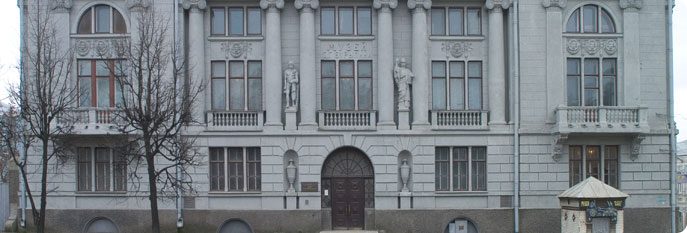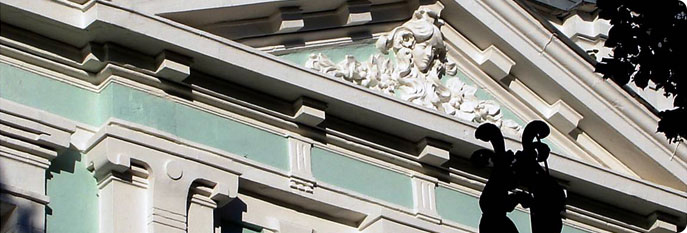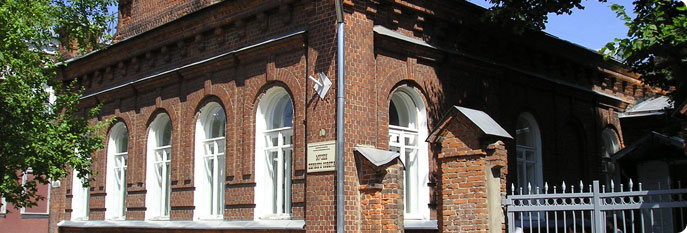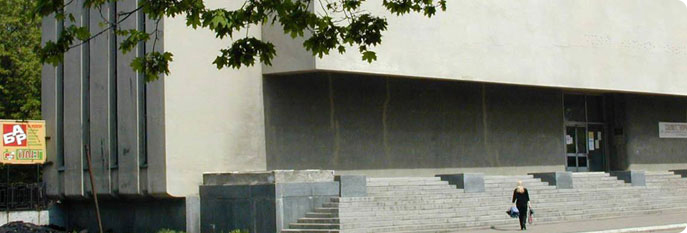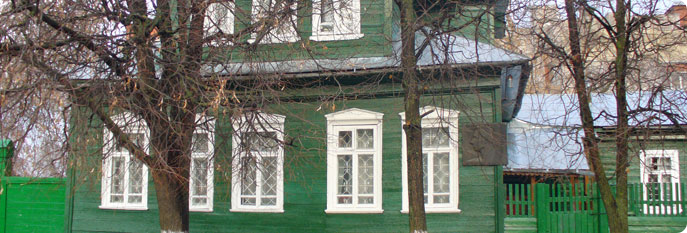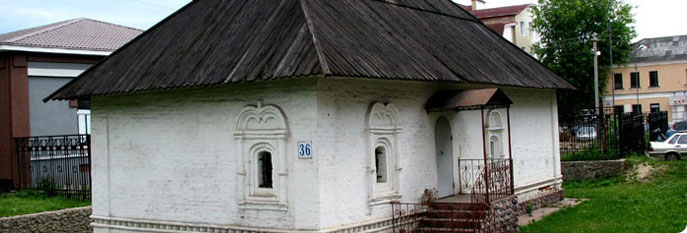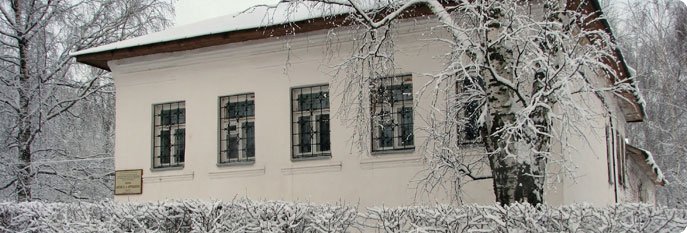Dmitry Burilin, the Founder

According to the archival data, Dmitry Gennadievich Burilin was born on February 4 (16), 1852 in Voznesenskaya village, near Ivanovo settlement, in the family of Diodor Andreevich Burilin, merchant of the third guild.
DiodorAndrevich was literate and, for those times, educated; he was interested in reading and had a small library. He gathered antique 17th-century church books, rare coins and collection items which he called “treasures” and kept solicitouslyin a special room in his house. His grandson Dmitry always asked him to show the collections, studied them with interest and listened to the grandfather’s stories about the collected rarities. His grandmother, Eudokiya Mikhailovna, having noticed the grandson’s interest in collecting, after her husband’s tragic death in 1860, passed all the antiquities to Dmitry in 1864.
In 1866 14-year-old Dmitry and his 16-year-old brother Nikolai practically started running the work of a cotton-printing factory build by Diodor Andreevich and looked after sisters and sick parents.
Dmitry Burilin’s factory business was getting stronger, developing and becoming famous. In 1882 on the All-Russian Industrial and Art Exhibition in Moscow he was awarded a letter of commendation for manufacturing. Persistent and knowing textile industry to a nicety, Burilin succeeded in the fulfillment of new plans of development and improvement of the factory.
In 1884, when Dmitry was 32, his wife Maria Stepanovna, nee Romanova, died, leaving Dmitry four children. Two years later, on January 12, 1886, Dmitry married Anna AleksandrovnaNoskova, daughter of a not too wealthy cloth trader from Yaroslavl. That was a happy marriage which gave Burilin five more children. The family was very harmonious. Dmitry Burilin was a man of advanced views; he didn’t impede his daughters’ education, in spite of the fact that it wasn’t usual at that time.
To the extent of his abilities, Dmitry Burilin tried to assist the development of education, medicine, and culture in his hometown, helped improving Ivanovo-Voznesensk. In 1910 he constructed a boulevard on Aleksandrovskaya Street, in front of his family house. For this purpose he brought 224 lime trees and 1000 hawthornsfrom Riga and mounted beautiful metal railings.
Dmitry Burilin was an honorary member of councils of trustees of different educational institutions and church schools, granting money for hospitals and orphanages construction.
Though he had been home educated, Burilin had versatile interests. He concerned himself with Ivanovo-Voznesensk history and treated with respect every period of his hometown’s past. He contributed the preservation of a wooden 17th-century church of Assumption under the monastery of the Intercession.
His passion for collecting and love of ancient and rare things defined Burilin’s aim of life – to create a museum for the public purposes, for all who were interested. “The museum is my soul, and the factory is a source of means of subsistence and its replenishment”, he said once.
Burilin spent tremendous sumsof money for his collections. Though his family often was in need of money, he bought works of art, graphics, sculpture, ancient books, ethnographic objects, various rarities. To replenish his collection Burilin visited many Russian towns and foreign countries: England, Austria, Germany, Greece, Egypt, Italy, Poland, Turkey, France, Finland, Belgium, Switzerland. There he visited museums and antique shops, met with collectors, and brought from those places manyvaluable rarities and works of art. In 1913 Dmitry Burilin with his wife visited Egypt where they bought a mummy in a sarcophagus. In autumn that year it was safely delivered by rail to Ivanovo-Voznesensk.
Dmitry Burilin possessed rich ethnographic collections. The largest was the Russian collection. It comprised various items of household, tableware, kitchen utensils, ivories, clothes, headgears, weapons, textiles. The Orient department of the museum was particularly valuable. It comprised the unique collection of Buddhist items – the only collection of this kind in pre-revolutionary Russia. One of the rarities of Burilin’s collection was the universal astronomical clock. The numismatic collection was also rich. In 1885 it numbered up to 100 000 coins, orders and medals of 16th- 20th centuries from 236 states. The masonic collection was one of the best in Russia. It contained the exceptional masonic signs of all countries, manuscripts and symbolic clothes.
One of the most significant collections was the textile fund which comprised various fabrics from Russia, Europe and the East. Since the late 1880s Burilin showedhis collections on many exhibitions in Moscow, St Petersburg, Nizhny Novgorod. In autumn 1911 in Moscow in the building of the State Historical Museum the exhibition was organized devoted to the memory of the great writer L.N. Tolstoy. Dmitry Burilin had met with the writer, had been in correspondence with him and Sofia AndreevnaTolstaya; he had sent printed cotton and sateen to YasnayaPolyana for the peasants’ children. Burilin’s activities aimed at gathering commemorative items and documents about Lev Tolstoy and popularizing his work got public recognition; in May 1917 Burilin was unanimously chosen the fellow of the Tolstoy Society.
One of the first exhibitions of his collection was organized by Burilin in Ivanovo-Voznesensk in April 1903. The exhibition was held in the building of the Women’s Professional School. The funds raised during the exhibition Burilin donated to the orphanage in Shuya.
In 1912 the Burilins celebrated a centenary of the family’s industrial and public activities. Dmitry Burilin decided to start constructing a special building for the museum. The Town Duma and Council allowed construction of the museum and the underground tunnel on the land of NikolayGennadievich and Dmitry GennadievichBurulins. On August 25, 1912 the special building was laid.
Though the construction had been still in progress, in October 1914 the museum opened for organized visitors. Some rooms were leased to Ivanovo-Voznesensk drawing school. Dmitry Burilin was an honorary warden of the school and hoped that the students would use the items of his collection for their education.
The Museum officially opened on December 26, 1914. The draft charter of the museum read that its goal was “to assist the development of local industry through familiarizing with the collection of items of print works, from the initial printed clothes to the newest foods, both of local and foreign production, study of scientific and practical information in print works; to be devoted to art and to take care of preservation and replenishment of the collection of items of Russian and foreign artistic antiquities and the newest artistic items, and to promote love of art among people by means of dissemination of information about it and its aims”.
In the new building Burilin organized a book depository, departments of Greek, Roman, and Egyptian antiquities, rarities from the Far East, antique items of Russian household, a manufacture department, and a picture gallery. In one of the best halls he organized a library and a reading room supported with his and his wife’s funds.
Dmitry Burilin had always concerned about the future of the collection. In his will in 1896 he wrote: “The collection mentioned should afterwards become the property of our home town Ivanovo-Voznesensk and should never be sold out or plundered (it had been collected in need and with a lot of effort).
The events of 1917 and the revolution changed everything. After nationalization of the Museum of Industry and Art in 1919 the purpose of its exhibition activities was cardinally changed. In 1924 Burilin was removed from the position of the chief curator of the museum; his museum activities were prohibited. It was a hard blow to him which undermined his health. Dmitry Burilin died on September 13, 1924.
Only several decades later Dmitry Burilin, his personality, contribution to Ivanovo culture, and the uniqueness of his collections were estimated at their true worth.
In February 1993 the established Ivanovo State Alliance of Museums of Local History was named after Dmitry Burilin. In 2000 Dmitry Burilin was granted the title of the honorary freeman of Ivanovo. The concept created in 2003 gave the opportunity to expose the masterpieces from Burilin’s collections in the Museum’s halls. In 2007 the memorial board was opened on the façade of the Museum.
